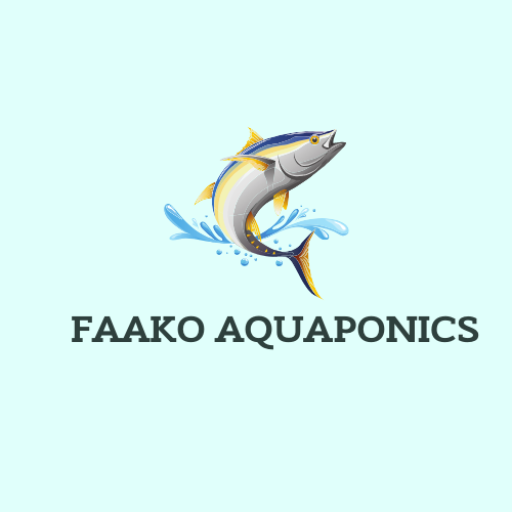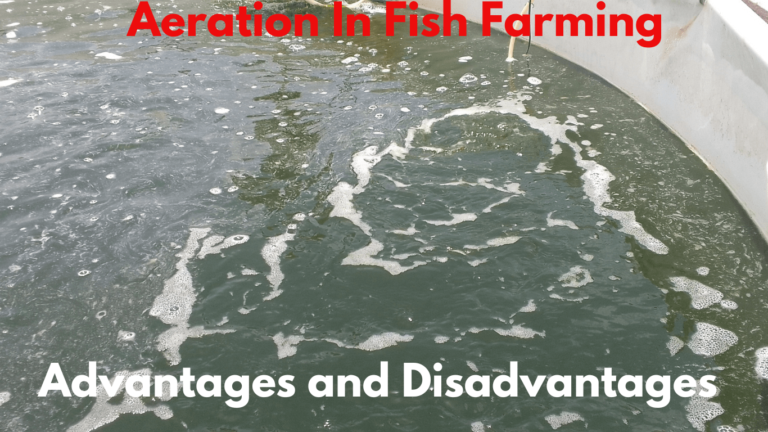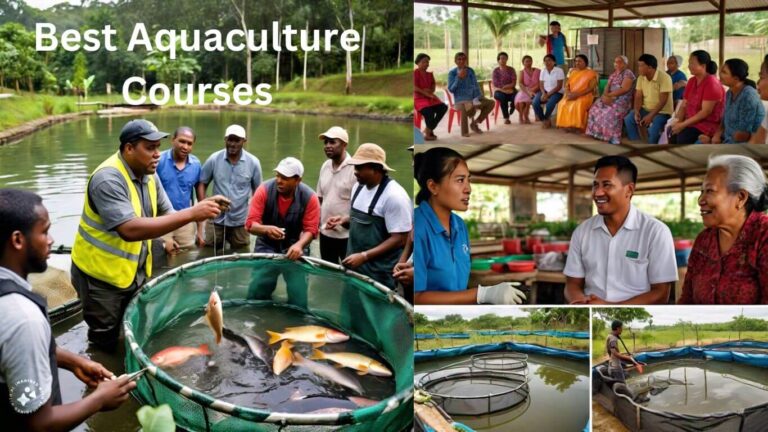Aeration in fish farming is a vital component of successful fish farming, playing a crucial role in maintaining the health and growth of aquatic livestock.
Proper aeration ensures that dissolved oxygen levels in the water remain sufficient to support fish and other aquatic organisms, preventing stress, diseases, and mortality.
While the benefits of aeration are clear, it’s important to understand the various methods available, their advantages and disadvantages, and how to implement them effectively.
What is Aeration in Fish Farming
Aeration in fish farming refers to the process of adding oxygen to the water to maintain adequate dissolved oxygen levels for the health and growth of the fish.
This is crucial because fish and other aquatic organisms rely on dissolved oxygen to breathe.
How Does Aeration Work
Aeration in fish farming works by increasing the amount of dissolved oxygen in the water, which is essential for the survival and growth of aquatic organisms.
Here’s a detailed explanation of how aeration works and the methods used:
1. Mechanical Aeration
Mechanical aeration involves using devices that physically mix air and water, increasing oxygen transfer.
– Surface Aerators: These devices agitate the water surface, promoting oxygen exchange. They typically use paddles or impellers to splash water into the air, where it absorbs oxygen before returning to the pond.
– Diffused Aeration: This method uses air compressors to pump air through a network of pipes and diffusers placed at the bottom of the pond.
The diffusers release air as fine bubbles, which rise to the surface, increasing the surface area for oxygen exchange.
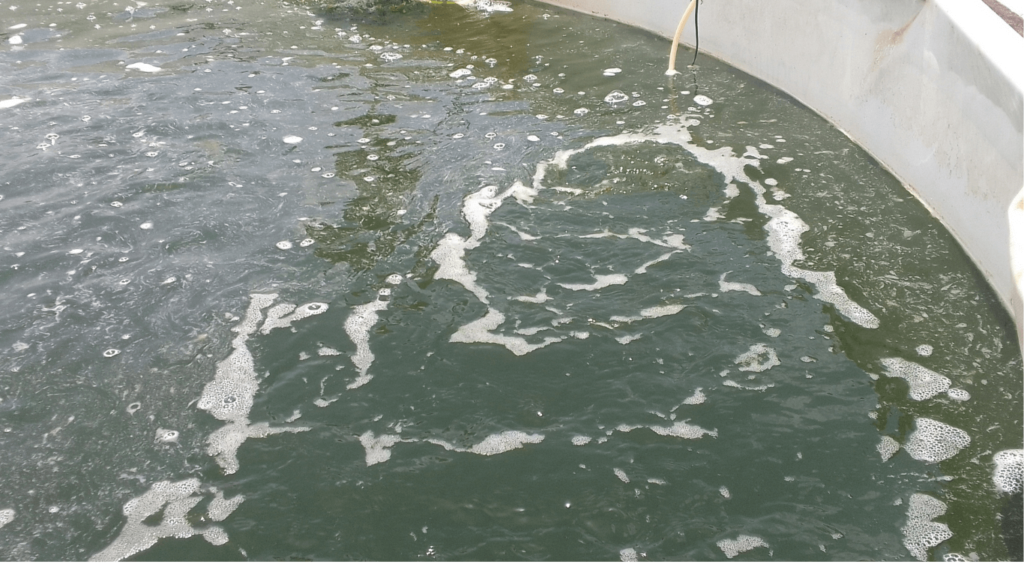
– Paddle Wheel Aerators: These are commonly used in ponds and tanks. They churn the water with rotating paddles, creating turbulence that enhances oxygen absorption.
2. Natural Aeration
Natural aeration relies on environmental factors to increase dissolved oxygen levels.
– Water Flow and Currents: Streams, rivers, and waterfalls naturally aerate water as it moves and tumbles, incorporating oxygen from the atmosphere.
– Wind Action: Wind can create waves and ripples on the water surface, facilitating gas exchange and increasing oxygen levels.
– Photosynthesis: Aquatic plants and algae contribute to natural aeration by producing oxygen during photosynthesis.
However, this process is limited to daylight hours and may not suffice for high-density fish farming.
3. Chemical Aeration
Chemical aeration involves the addition of chemicals to the water to enhance oxygen levels.
– Oxygen-Releasing Compounds: Compounds like calcium peroxide can be added to release oxygen slowly as they dissolve in water.
This method is typically used in emergency situations when oxygen levels drop suddenly. Like what happened to me in my fish farm. I lost hundreds of fish because of high ammonia and oxygen depletion. If I had these oxygen chemicals, I could save them. Because I tried changing the water but it was too late. Read details here
4. Factors Affecting Aeration Efficiency
Several factors influence the efficiency of aeration:
– Water Temperature: Warmer water holds less dissolved oxygen than cooler water. Therefore, aeration systems need to be more effective in warmer climates or seasons.
I always experience low oxygen dissolved in my fish pond during the dry and hot seasons. But raining and hammattan seasons, there is always high oxygen in the fish ponds.
– Salinity: Higher salinity reduces the water’s ability to hold dissolved oxygen, making aeration more challenging in brackish or marine environments.
– Organic Load: High levels of organic matter from fish waste, uneaten feed, and plant debris consume oxygen as they decompose, increasing the need for effective aeration. This is why you should always avoid overfeeding your fish. So always use a responsive method of feeding your fish.
– Fish Density: Higher stocking densities require more oxygen, necessitating more robust aeration systems to maintain adequate oxygen levels. This is so because there is a high competition of the oxygen among the fish in the fish pond.
Benefits/Importance of Aeration in Fish Farming
1. Enhanced Oxygen Levels
Aeration increases the amount of dissolved oxygen in the water, which is essential for the respiration and overall health of fish. Adequate oxygen levels support efficient metabolism, growth, and reproduction.
2. Improved Water Quality
Aeration helps maintain water quality by promoting oxygen exchange and preventing stratification. It reduces the accumulation of harmful gases like carbon dioxide and ammonia, which are toxic to the fish.
3. Prevention of Fish Stress and Disease
Proper aeration reduces stress on fish by ensuring they have access to sufficient oxygen at all times. Stress weakens the immune system, making fish more susceptible to diseases. Aeration helps minimize disease outbreaks and improves overall fish health.
4. Optimized Feed Conversion
Fish in well-aerated environments exhibit better appetite and digestion, leading to improved feed conversion ratios. This means that fish convert feed into biomass more efficiently, resulting in faster growth and higher yields.
5. Enhanced Waste Breakdown
Aeration in fish farming supports the activity of aerobic bacteria, which decompose organic waste in the water. By facilitating the breakdown of fish waste, uneaten feed, and other organic matter, aeration helps maintain cleaner water and reduces the risk of nutrient imbalances.
6. Increased Stocking Density
Proper aeration allows for higher stocking densities in fish farms. With sufficient oxygen supply, farmers can raise more fish in the same area, maximizing production potential and profitability.
7. Seasonal Stability
Aeration helps stabilize water conditions, especially during hot summer months when oxygen levels tend to decrease.
By mitigating the effects of temperature fluctuations and algae blooms, aeration ensures year-round stability in fish farming operations.
8. Boosted Fish Production
Ultimately, the combination of improved oxygen levels, water quality, and feed conversion rates leads to higher fish production.
Aeration enables you as a farmer to achieve greater yields, meet market demands, and increase profitability.
9. Sustainable Aquaculture
By maintaining a healthy aquatic environment, aeration supports sustainable aquaculture practices. It reduces the environmental impact of fish farming by minimizing disease outbreaks, waste accumulation, and reliance on antibiotics and chemical treatments.
10. Mitigation of Environmental Risks
Aeration helps mitigate environmental risks associated with fish farming, such as oxygen depletion and nutrient pollution. By promoting oxygenation and waste breakdown, aeration contributes to the overall ecological balance of aquatic ecosystems.
Disadvantages of Aeration in Fish Farming
While aeration is crucial for successful fish farming, it does come with some disadvantages. Here are the key drawbacks with detailed explanations:
1. High Energy Costs
Aeration systems, particularly mechanical ones, require significant electrical power to operate continuously. This can lead to high energy bills, especially in large-scale operations.
In remote areas without reliable electricity, solar, diesel or gasoline-powered aerators may be used, which can be expensive and add to operational costs.
2. Initial Investment and Maintenance Costs
The initial purchase and installation of aeration systems can be costly. High-quality aerators, diffusers, and air compressors require substantial investment.
Aeration equipment requires regular maintenance to ensure optimal performance. This includes cleaning diffusers, checking and replacing parts, and repairing any mechanical failures. Maintenance can be labor-intensive and costly.
3. Environmental Impact
Mechanical aerators, especially surface aerators and paddle wheels, can be noisy. This noise can be disruptive to nearby wildlife and human communities.
If fossil fuel-powered aerators are used, they can contribute to air pollution and carbon emissions, impacting the environment negatively.
4. Risk of Over-Aeration
Excessive aeration can lead to supersaturation of oxygen in the water, which can cause gas bubble disease in fish. This condition occurs when gas bubbles form in the fish’s bloodstream and tissues, potentially leading to death.
Over-aeration can disrupt the natural balance of the pond or tank ecosystem, affecting beneficial microorganisms and aquatic plants.
5. Complexity and Technical Expertise
Proper installation, operation, and maintenance of aeration systems require technical knowledge and expertise. Farmers without adequate training may struggle to manage these systems effectively.
Designing an effective aeration system involves careful planning and consideration of various factors like pond size, water depth, and fish density. Incorrect design or poor management can reduce the efficiency of aeration.
6. Potential for Mechanical Failure
Mechanical aerators are prone to breakdowns, which can lead to temporary loss of aeration. This can be critical in high-density fish farms where oxygen demand is consistently high. I have had the experience of two of my oxygenated pumps breaking down within three-month intervals and I had to replace them.
Mechanical parts can wear out over time, and sudden failures can occur, requiring immediate attention to prevent fish mortality.
7. Inconsistent Performance
The efficiency of aeration systems can vary based on environmental conditions like temperature, salinity, and organic load.
Systems may not perform consistently under different conditions, necessitating adjustments and monitoring.
8. Dependency on External Factors
The continuous operation of aeration systems is dependent on a stable electricity supply. Power outages can disrupt aeration and endanger fish health. This unstable power also affects the pumps as it happened to me. It was due to unstable solar power that my two pumps spoiled.
For fuel-powered aerators, consistent fuel availability is crucial. Supply chain disruptions can pose risks to aeration continuity.
9. Water Quality Issues
Some aeration methods, particularly those that agitate the water significantly, can resuspend sediments from the pond bottom. This can release harmful substances like ammonia and hydrogen sulfide into the water column, negatively impacting water quality and fish health.
10. Economic Viability
In some cases, the cost of installing and operating aeration systems may not be justified by the benefits, especially in small-scale or low-density fish farms. Farmers need to conduct a thorough cost-benefit analysis to ensure economic viability.
How To Mitigate Limitations of Aeration In Fish Farming
Mitigating the disadvantages of aeration in fish farming involves strategic planning, investment in quality equipment, and adopting best practices. Here are detailed strategies for addressing each major disadvantage
1. High Energy Costs
- Invest in energy-efficient aeration systems. Look for aerators with high oxygen transfer rates per unit of energy consumed. The various pumps have different voltages and watts. Look for the less efficient pumps to operate.
- Utilize renewable energy sources like solar or wind power to run aeration systems. Solar-powered aerators are increasingly available and can significantly reduce electricity costs. I use solar on my farm. And I tell you, you only experience high cost during the installation. After that, you are free from electricity bills and unstable power.
- Implement aeration during critical times when oxygen levels are most likely to drop, such as during hot afternoons and early mornings.
- Use oxygen monitoring systems to determine precise aeration needs.
2. Initial Investment and Maintenance Costs
- Conduct a thorough cost-benefit analysis to ensure that the investment in aeration systems will yield adequate returns in terms of fish health and growth.
- Establish a routine maintenance schedule to prevent breakdowns and extend the lifespan of equipment.
- Regular cleaning, lubrication, and inspections can reduce the need for expensive repairs. I always do this in my fish farm and i recommend that for you as well.
- Seek bulk purchase discounts from suppliers or explore grants and subsidies available for sustainable aquaculture practices to offset initial costs.
3. Environmental Impact
- Choose aeration systems designed to minimize noise, such as subsurface diffusers or low-noise mechanical aerators. Often submersible pumps are silent ones and that is what I use and the place is very quite. Installing sound barriers or placing aerators away from residential areas can also help.
- Opt for electric-powered aerators where possible, and for fuel-powered ones, ensure they are well-maintained to minimize emissions. Consider hybrid systems that can switch between electricity and fuel.
4. Risk of Over-Aeration
- Use dissolved oxygen sensors and automated control systems to maintain optimal oxygen levels and avoid supersaturation. These systems can adjust aeration intensity based on real-time oxygen readings.
- Work with aquaculture experts to design aeration systems that match the specific needs of your operation, considering factors like pond size, fish density, and water depth.
- Check out aquaculture experts; you can consult them through this post.
5. Complexity and Technical Expertise
- Invest in training for staff on the installation, operation, and maintenance of aeration systems. Online courses, workshops, and consultation with experts can build necessary technical skills. I recommend some online courses to help boost your aquaculture business. Check out this post
- Choose user-friendly aeration systems that require minimal technical expertise to operate and maintain. Some modern systems come with automated features that simplify their management.
6. Potential for Mechanical Failure
- Implement redundant aeration systems to ensure continuous operation in case one system fails. Having backup equipment readily available can prevent prolonged downtime.
- Regular inspections should be conducted to identify and address potential issues before they lead to system failures. Keep a stock of essential spare parts for quick repairs.
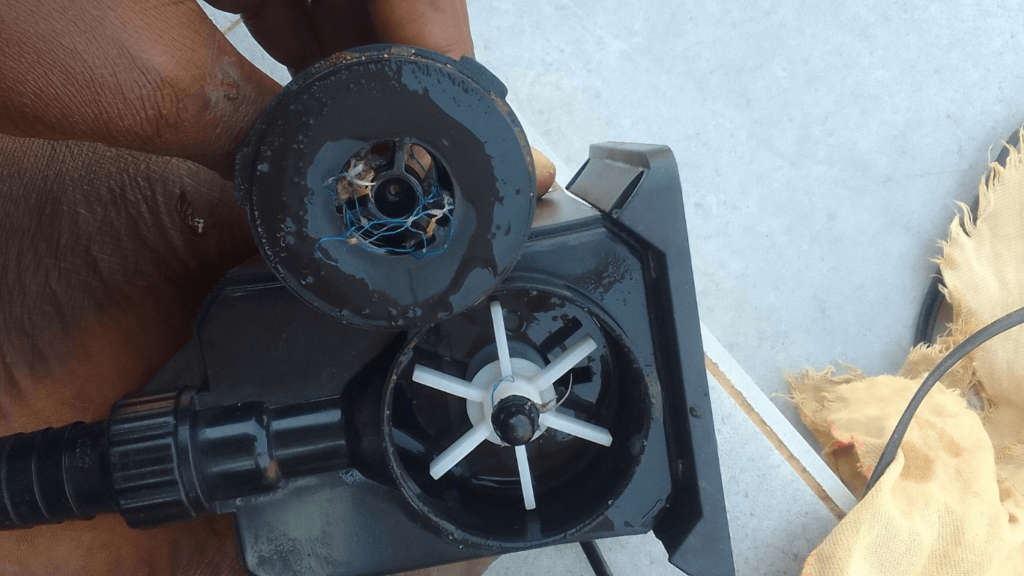
Open and clean aeration pumps always
7. Inconsistent Performance
- Adjust aeration practices based on seasonal changes and environmental conditions. Use data from monitoring systems to optimize aeration strategies throughout the year. That is why you should always practice record-keeping in your farm
- Choose aeration systems designed to perform well under varying conditions. For example, diffused aeration systems can be more effective in deeper water bodies and in varying temperatures.
8. Dependency on External Factors
- Install uninterruptible power supply (UPS) systems or backup generators to ensure continuous aeration during power outages. Solar-powered aerators can also provide reliable operation in remote areas.
- Maintain adequate fuel storage to ensure a continuous supply for fuel-powered aerators, and establish relationships with reliable fuel suppliers.
9. Water Quality Issues
- Design aeration systems to minimize disturbance of sediments. Subsurface diffusers that release fine bubbles can provide effective aeration without significantly disturbing the pond bottom.
- Implement integrated waste management practices such as regular pond cleaning, the use of biofilters, and maintaining balanced stocking densities to reduce organic load.
10. Economic Viability
- Choose scalable aeration solutions that can be adjusted as the farm grows. Start with a basic system that can be expanded as production increases.
- Form cooperatives with other fish farmers to share the costs and benefits of advanced aeration systems. Joint investments can reduce individual financial burdens.
Management of Aeration in Fish Farming
Managing aeration in fish farming involves selecting the appropriate aeration method, ensuring proper installation and maintenance, and continuously monitoring and adjusting the system to meet the needs of your fish and the specific conditions of your pond or tank. Here’s a detailed guide on how to effectively manage aeration in fish farming:
1. Selecting the Appropriate Aeration Method
Choose an aeration method based on the size of your operation, type of fish, and environmental conditions. Check on the top of this post for method of aeration in fish farming to choose.
2. Installation of Aeration Systems
Proper installation is crucial for the effectiveness of the aeration system:
– Placement: Install aerators in locations that ensure optimal water circulation. For diffused aeration, place diffusers evenly across the pond bottom.
– Depth: Ensure aerators are at the correct depth to maximize oxygen transfer efficiency without disturbing sediments.
– Power Supply: Secure a reliable power source, whether it’s electrical, solar, or wind-powered, to ensure continuous operation.
3. Monitoring and Adjusting Oxygen Levels
Regular monitoring and timely adjustments are key to effective aeration management:
– Oxygen Monitoring: Use dissolved oxygen meters and sensors to continuously monitor oxygen levels in the water. Keep records to identify trends and potential issues.
– Automated Systems: Invest in automated aeration systems that can adjust aeration intensity based on real-time oxygen readings.
– Visual Checks: Observe fish behavior and water clarity. Fish gasping at the surface or congregating near aerators can indicate low oxygen levels. In that instance, you must use emergency methods such as chemical oxygenation or quick change of water before it is too late.
4. Maintenance of Aeration Equipment
Routine maintenance ensures the longevity and efficiency of your aeration systems:
– Cleaning: Regularly clean aerators, diffusers, and air stones to prevent clogging and biofouling.
– Inspection: Conduct periodic inspections to identify and fix wear and tear, leaks, or mechanical issues.
– Lubrication: Ensure moving parts are well-lubricated to reduce friction and prevent breakdowns.
– Spare Parts: Keep essential spare parts and pumps on hand for quick repairs. I always have spare pumps to fix when I face issues with my pump before sending it for check out by repairers.
– Always check water level: always make sure submersible pumps are always under the water and fully covered. If not, they can easily break down because they are supposed to work well in water. Depending on where you place them, if they are near the surface, they are always exposed as the water level reduces. In that case, you top up the water in your pond.
5. Optimizing Aeration Schedule
Adjust aeration schedules based on daily and seasonal variations:
– Peak Oxygen Demand: Run aerators during times of high oxygen demand, such as during warm afternoons and early mornings.
– Seasonal Adjustments: Increase aeration during summer months when oxygen levels naturally decline and decrease during cooler months when oxygen solubility is higher.
6. Integrated Waste Management
Manage waste effectively to reduce oxygen consumption by decomposing organic matter:
– Feed Management: Avoid overfeeding and use high-quality feed to reduce waste. You can also implement Automated feeding methods
– Regular Cleaning: Remove uneaten feed, fish waste, and debris from the pond or tank. That is why you should install the Recirculating Aquaculture Systems (RAS) in your fish farm
– Biofilters: Use biofilters to enhance biological filtration and reduce organic load.
7. Emergency Preparedness
Be prepared for emergencies that could affect aeration:
– Backup Systems: Have backup aeration systems and power sources in place, such as generators, battery backups, and pumps.
– Oxygen-Releasing Compounds: Keep a supply of oxygen-releasing compounds on hand for immediate use during emergencies.
8. Training and Education
Ensure that all personnel involved in fish farming are knowledgeable about aeration management:
– Training Programs: Provide training on the operation, maintenance, and troubleshooting of aeration systems.
– Regular Updates: Stay updated with the latest advancements in aeration technology and management practices through workshops, courses, and industry publications.
Conclusion
In conclusion, aeration is an indispensable aspect of fish farming that directly impacts the health, growth, and productivity of your aquatic livestock.
By understanding the various aeration methods and their respective advantages and disadvantages, you can make informed decisions to optimize your farming practices.
While there are challenges associated with aeration, such as costs and technical complexities, these can be effectively managed through strategic planning, investment in quality equipment, and adherence to best practices.
As you implement and refine your aeration systems, you’ll not only improve water quality and fish health but also enhance the overall sustainability and profitability of your aquaculture operation.
Stay proactive in monitoring and adjusting your aeration strategies to meet the evolving needs of your fish farm, and you’ll reap the rewards of a thriving aquatic environment.
Thank you for reading.
Please leave a comment if you enjoy the piece
